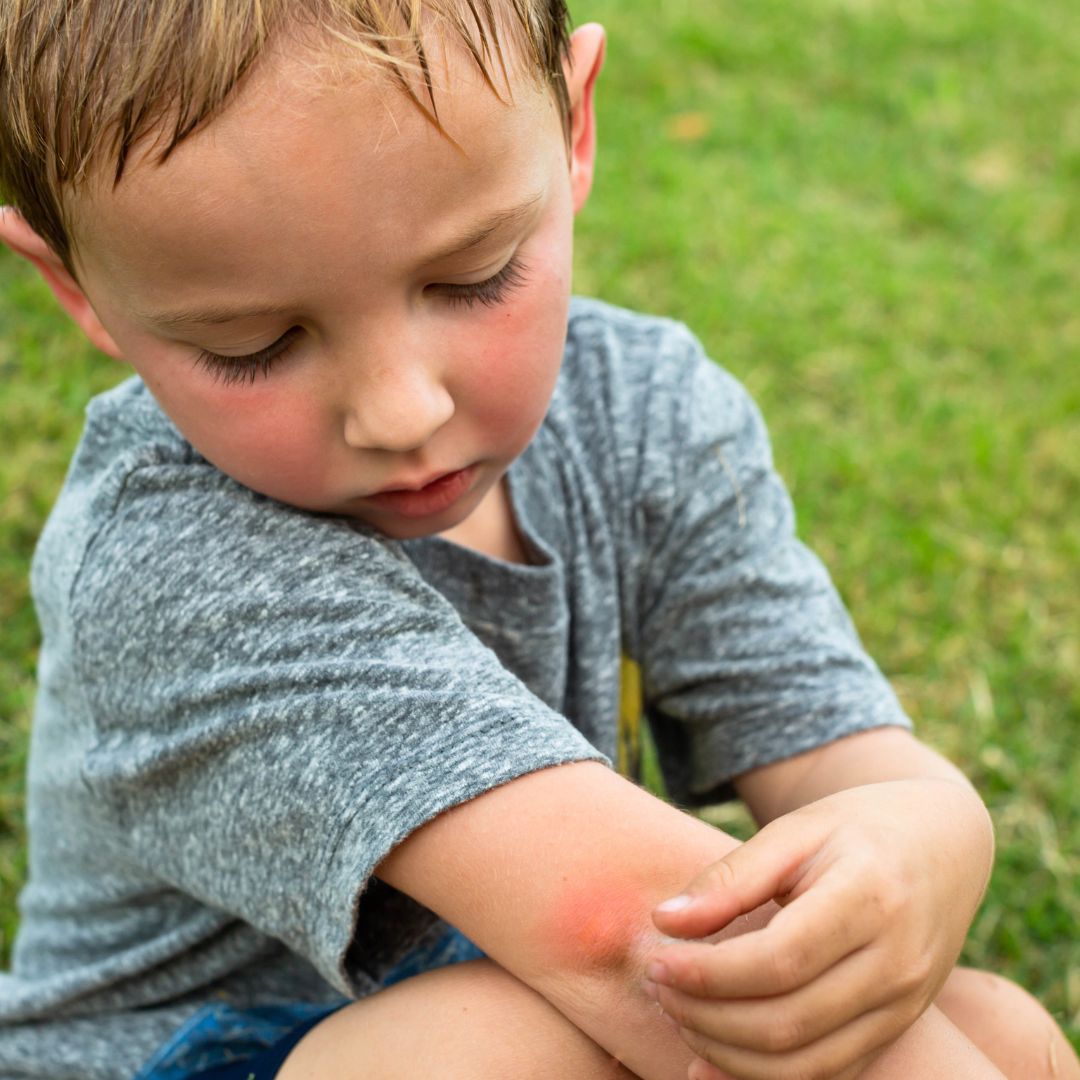By Dr. Peter Klapper Ph.D.
As the weather warms up and people head outdoors to enjoy the sunshine, so comes the risk of encountering insects and potential bug bites. While most bug bites tend to be irritating, some bites can come with additional risks, such as an infected mosquito bite making it very important to understand the different types of bites and how to treat them. In this blog post, we will you learn how to identify and manage common insect bites.
Common Bug Bite Culprits
When you step outside (or even inside), you can potentially be the victim of a bug bite. However, there are more insects that tend to bite such as mosquitoes, ticks, spiders, bed bugs and chiggers, so it is important to be aware of the various type of insect bites. Each have their own distinct habitat and behaviors, which can help you determine the course of action if you are nibbled upon.
Mosquitos are the most common bite offender and breed in stagnant water such as ponds, puddles, and in containers holding still water. They are attracted to body heat, carbon dioxide, and specific odors and are most active during dusk and dawn but can bite at any time.
Ticks are often found in wooded and grassy areas as well as in leaf litter, urban parks, and gardens. They attach themselves to animals or humans to feed on blood and can transmit diseases like Lyme disease and Rocky Mountain spotted fever.
Spiders inhabit various environments such as gardens, forests, and homes, favoring dark and sheltered locations. While most spiders are harmless, some like the black widow and brown recluse can deliver venomous bites, typically when they feel threatened.
Bed Bugs are usually found in and around beds, furniture, and in cracks and crevices. They are nocturnal and feed on blood being attracted to warmth and carbon dioxide emitted by humans during sleep.
Chiggers are found in grassy, wooded areas, gardens, and parks. They are the larvae of mites and feed on skin cells, often attaching themselves to humans and animals in areas where clothing fits tightly, like socks and waistbands.
Sign and Symptoms From Bug Bites
More than likely, if you fall victim to a bug bite, you’ll notice with how your skin reacts. Typically, symptoms include:
Redness from bug bites are typically localized at the site of the bite and may be accompanied by warmth and mild swelling.
Itching is a common symptom of bug bites and can range from mild to intense. Whether it is an itchy spider bite or from a mosquito, scratching the bite can lead to further irritation and increase the risk of infection.
Swelling from insect bites is common, especially if the individual is allergic to the insect's saliva. Depending on the severity of the reaction, the swelling and inflamed bug bite may be localized or more widespread. In some cases, bug bites can trigger an allergic reaction known as anaphylaxis. Symptoms of anaphylaxis includes difficulty breathing, swelling of the face, lips, or throat, a rapid heartbeat, dizziness, fainting, nausea, or vomiting.
Treatment Options
Luckily, if you do get a bite, most times it can be treated at home. First, begin by cleaning the affected area with soap and water to reduce the risk of infection. If you are experiencing an inflamed bug bite with a lot of swelling or itching, use a cold compress or ice pack. If that still doesn’t help, try using an antihistamine or hydrocortisone cream to help reduce itching and inflammation.
Natural remedies are also a great option such as aloe vera, tea tree oil, or oatmeal baths, although their effectiveness varies from person to person. Also, don’t forget that we offer a natural approach to treating itching and irritation to bug bites in our Anti Itch Extra Strength.
More than anything, it's essential to avoid scratching the bite, as this can lead to further irritation and increase the risk of infection. If home remedies do not provide relief or if you experience severe symptoms, such as difficulty breathing or swelling, seek medical attention promptly.
How To Prevent Bug Bites
If you like the outdoors, but hate insects, it’s good to make sure that you take protective measures. To prevent bug bites, be sure to use a natural insect repellent, wear protective clothing such as long sleeves and pants, and avoid outdoor activities during peak mosquito activity times.
Environmental measures can also be taken around the home such as removing standing water and keeping your grass trimmed. Additionally, using mosquito nets when sleeping outdoors and avoiding known infested areas can help minimize the risk of bug bites.
Bug bites can be uncomfortable and, in some cases, pose health risks. It's essential to stay informed and proactive about protecting yourself from insect bites. By using insect repellents, identifying types of bug bites, wearing protective clothing, and being proactive with treatment after a bite, you can enjoy the outdoors safely.
Bug Bites 101




